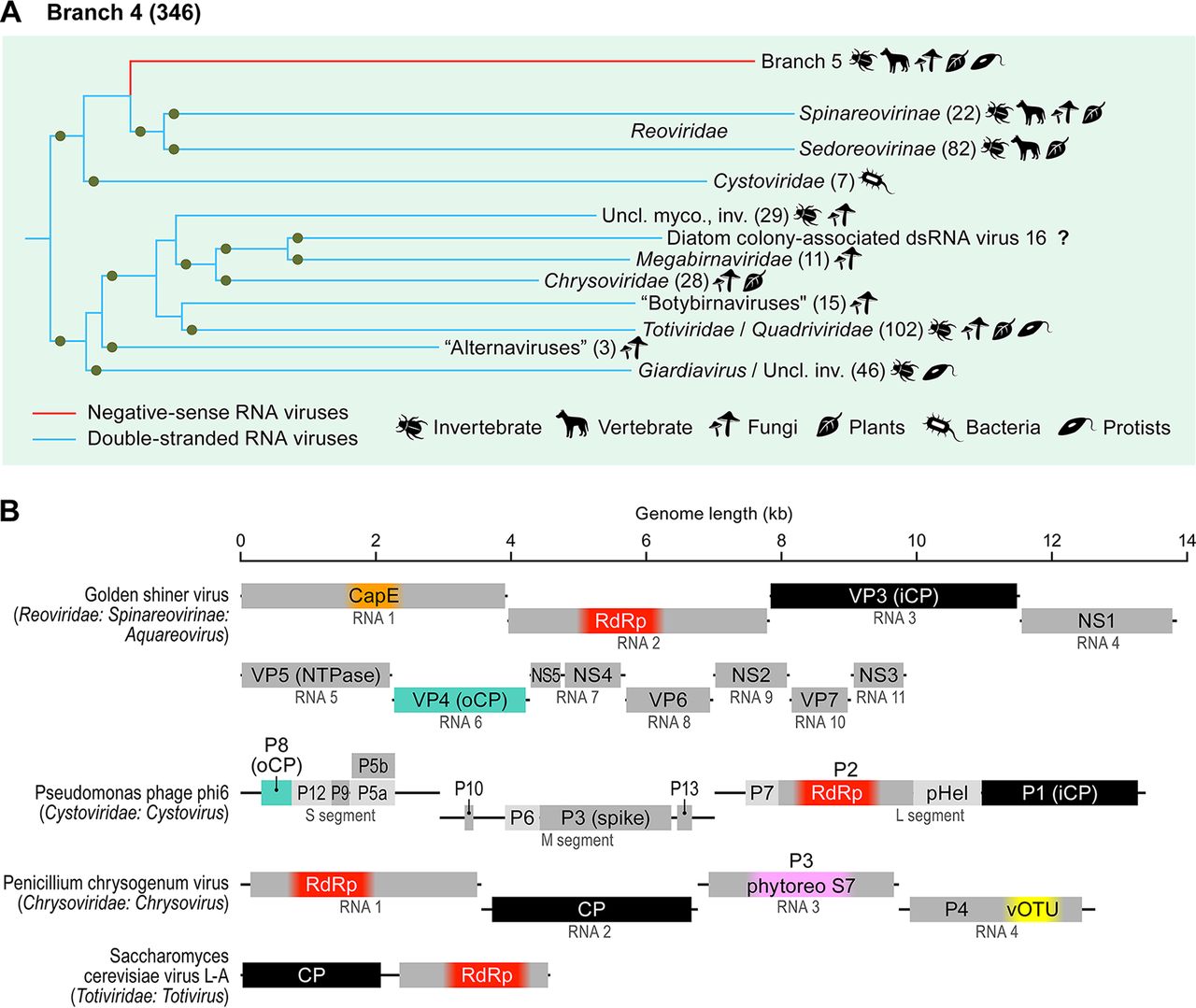Duplornaviricota on:
[Wikipedia]
[Google]
[Amazon]
''Duplornaviricota'' is a phylum of
 The following classes are recognized:
* ''
The following classes are recognized:
* ''
RNA viruses
''Orthornavirae'' is a kingdom of viruses that have genomes made of ribonucleic acid (RNA), including genes which encode an RNA-dependent RNA polymerase (RdRp). The RdRp is used to transcribe the viral RNA genome into messenger RNA (mRNA) and t ...
, which contains all double-stranded RNA viruses
Double-stranded RNA viruses (dsRNA viruses) are a polyphyletic group of viruses that have double-stranded genomes made of ribonucleic acid. The double-stranded genome is used as a template by the viral RNA dependent RNA polymerase (RdRp) to ...
, except for those in phylum ''Pisuviricota
''Pisuviricota'' is a phylum of RNA viruses that includes all positive-strand and double-stranded RNA viruses that infect eukaryotes and are not members of the phylum '' Kitrinoviricota,'' '' Lenarviricota'' or '' Duplornaviricota''. The name of ...
.'' Characteristic of the group is a viral capsid
A capsid is the protein shell of a virus, enclosing its genetic material. It consists of several oligomeric (repeating) structural subunits made of protein called protomers. The observable 3-dimensional morphological subunits, which may or ma ...
composed of 60 homo- or heterodimers of capsid protein on a pseudo-T=2 lattice. Duplornaviruses infect both prokaryotes
A prokaryote (; less commonly spelled procaryote) is a single-celled organism whose cell lacks a nucleus and other membrane-bound organelles. The word ''prokaryote'' comes from the Ancient Greek (), meaning 'before', and (), meaning 'nut' ...
and eukaryotes
The eukaryotes ( ) constitute the domain of Eukaryota or Eukarya, organisms whose cells have a membrane-bound nucleus. All animals, plants, fungi, seaweeds, and many unicellular organisms are eukaryotes. They constitute a major group of ...
. The name of the group derives from Italian ''duplo'' which means double (a reference to double-stranded), ''rna'' for the type of virus, and -''viricota'' which is the suffix for a virus phylum.
Classes
 The following classes are recognized:
* ''
The following classes are recognized:
* ''Chrymotiviricetes
''Ghabrivirales'' is an order of double-stranded RNA viruses. It is the only order in the class ''Chrysmotiviricetes''. The name of the class is a portmanteau of member families: ''chrys''oviridae, ''m''egabirnaviridae, and ''toti''viridae; and - ...
''
* ''Resentoviricetes
''Sedoreoviridae'' (''sedo'' = smooth) is a family of the ''Reovirales'' order of viruses. Viruses in this family are distinguished by the absence of a turreted protein on the inner capsid to produce a smooth surface.
Taxonomy
The family contain ...
''
* ''Vidaverviricetes
Cystoviruses are a family of double-stranded RNA viruses that infect bacteria. They constitute the family ''Cystoviridae''. The name of the group c''ysto'' derives from Greek ''kystis'' which means bladder or sack. There are seven genera in this ...
''
References
Viruses {{Virus-stub